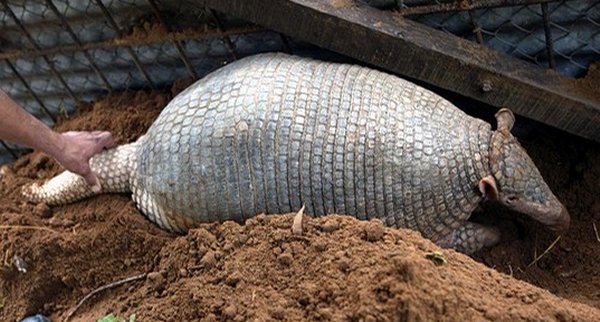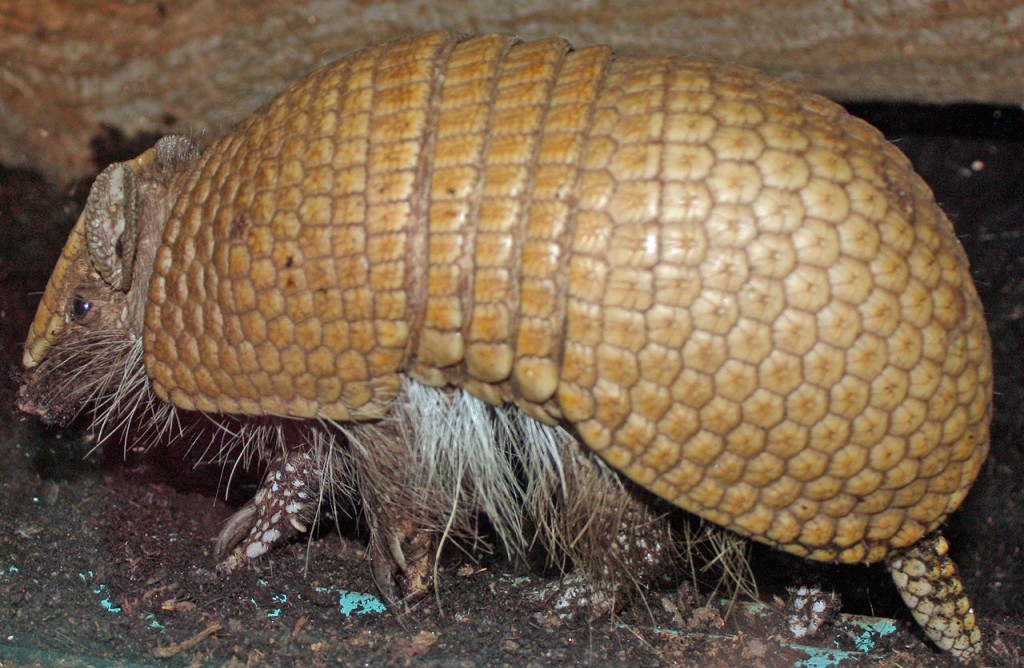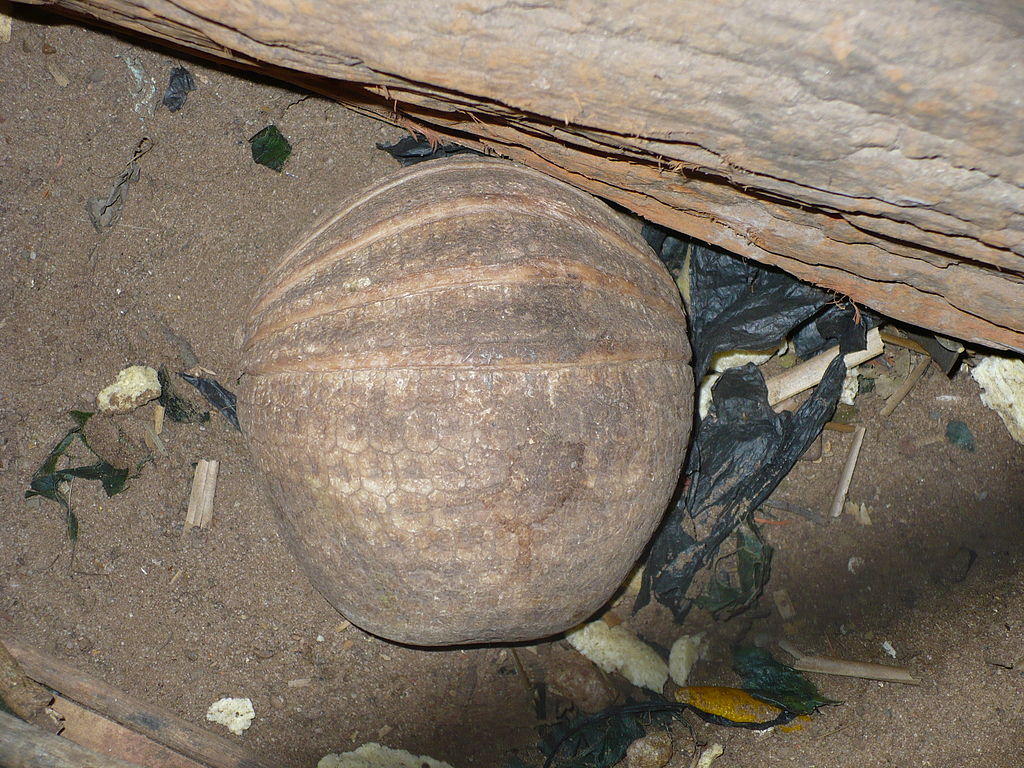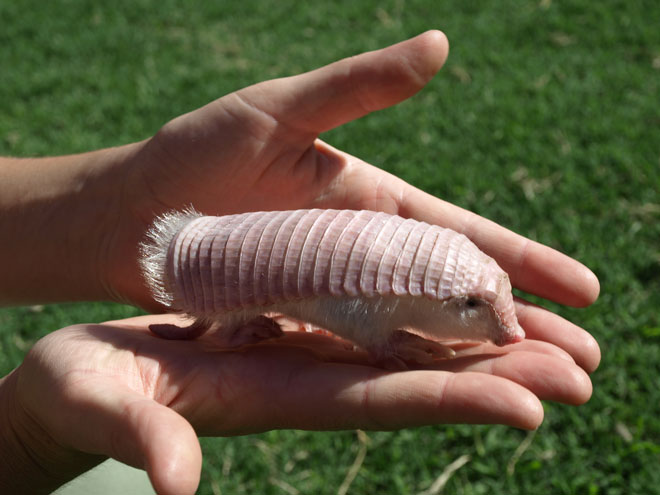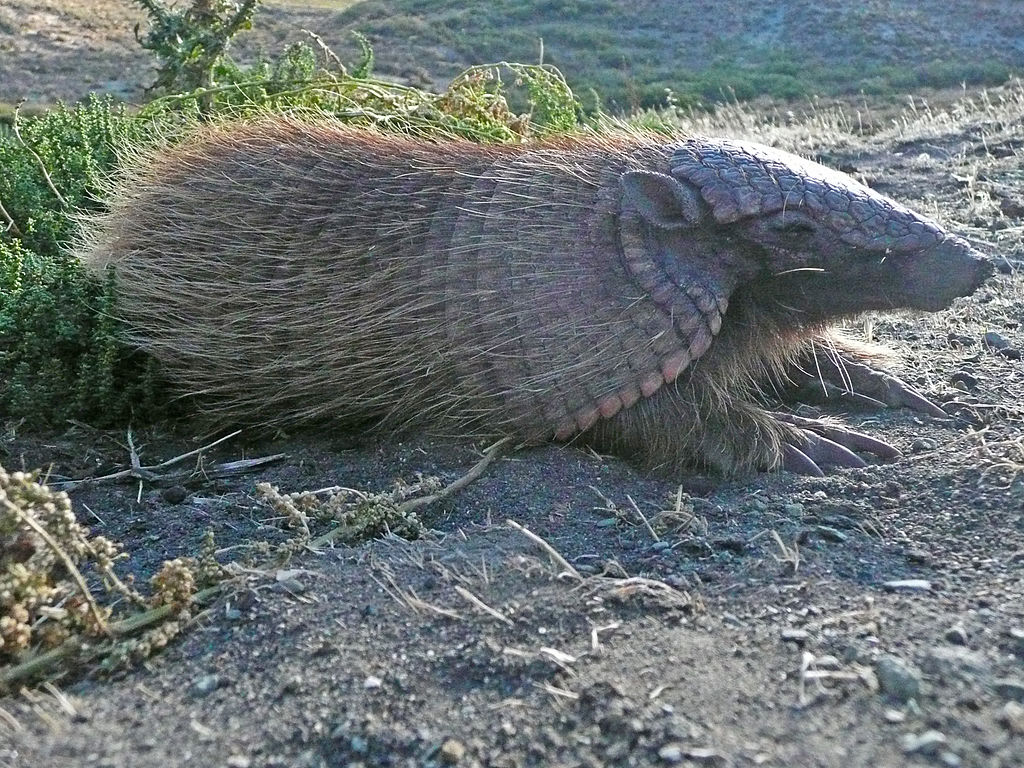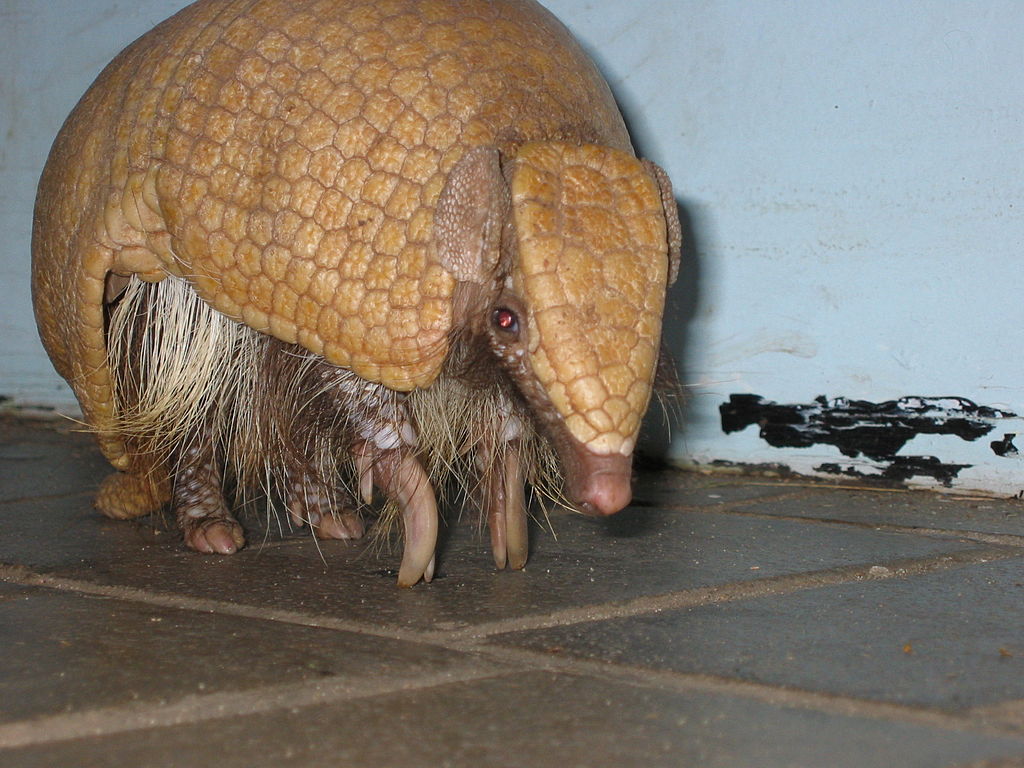The Armadillo Is A Strange Little Fella
The Armadillo is a funny looking thing, I think that’s something we can all agree on; the name means “little armoured one” in Spanish but the Aztecs used to call it Nahuatl meaning “turtle-rabbit” which totally makes sense. They’re related to sloths and anteaters, but their genome took them down a more heavily armoured path.
There’s actually 20 existing members of the armadillo family ranging in size from the pink fairy armadillo (more on him later) at 12 to 15 cm (5 to 6 in) up to the giant armadillo at 150 cm (59 in) who can weigh in at 59 kg (130 lb) – that’s about the weight of 120 cans of cider!?
Surviving armadillos are mostly confined to South and Central America, with Paraguay being a particular hot spot, 11 different species make their home there in total. All extant species are all excellent diggers, mostly eating insects.
The armour of the armadillo is formed of plates of dermal bone covered by smaller epidermal scales called scutes. The scutes are made of bone with a covering of horn. As you can imagine, bone covered by horn offers the little chaps a good degree of protection from predators when they roll themselves into a ball. If the armadillo decides it doesn’t look fearsome enough in a ball format it can run surprisingly fast for its size and construction.
Armadillos can swim too, but it’s a bit tricky, they have to swallow a stomach full of air before crossing rivers to ensure that their heavy battle armour doesn’t drag them to the bottom.
Armadillos are one of the few species we know of that can contract leprosy, handling or eating one can infect you. Leprosy was unknown in the New World before Westerners got over there, so it is probable that we carried it over there and handed it to them, now they’re passing it back as a punishment for stealing their land… or something like that.
The armadillo’s natural propensity to harbour leprosy has meant the poor little chaps have found themselves being studied by scientists researching the awful disease. One of the reasons for their susceptibility is thought to be their relatively low body temperature – 33–36°C, which is similar to human skin temperature.
Another scientific oddity in the armadillo family is the reproduction of the nine-banded armadillo. This particular species gives birth to four identical twins (quads I guess?) every time it gives birth. Four exact replicas from one original egg! This is called polyembryony and it’s the only case found in the world of the mammal.
Pink Fairy Armadillo
The pink fairy armadillo is one of the rarer and more shy versions of the armadillo. They are predominantly found in Argentina and are mostly nocturnal. Their disproportionately large digging hands have earned them the nickname “sand-swimmer”. The biggest problem that pink fairy armadillos face is rain. If heavy rain sets in they have to leave their burrow so they don’t drown. Also, if their fur gets too wet they can’t thermoregulate properly. On top of that there’s plenty of coyotes about on a stormy night eager for a snack.
These are sensitive creatures and do not deal well with captivity, most specimens die during transportation or within a few hours or days of arrival.
Screaming Hairy Armadillo
The screaming hairy armadillo is another of the smaller species and gets its name because it’s hairy and it screams when it’s afraid. It looks like Zelda out of Terrahawks. They’re spread across Argentina, Bolivia, and Paraguay, anywhere they can burrow.
This species puts on an extra 10% in body weight in the winter, which unfortunately makes it a prized snack for the locals, especially in Bolivia.
All in all the armadillo has gone up in my estimation. It’s not that I ever thought they were idiots or anything, but reading about them has certainly increased my enjoyment of the odd looking balls of plating.
MORE AMAZING ANIMALS:
THE DUCK BILLED PLATYPUS – WEIRDER THAN YOU THOUGHT


